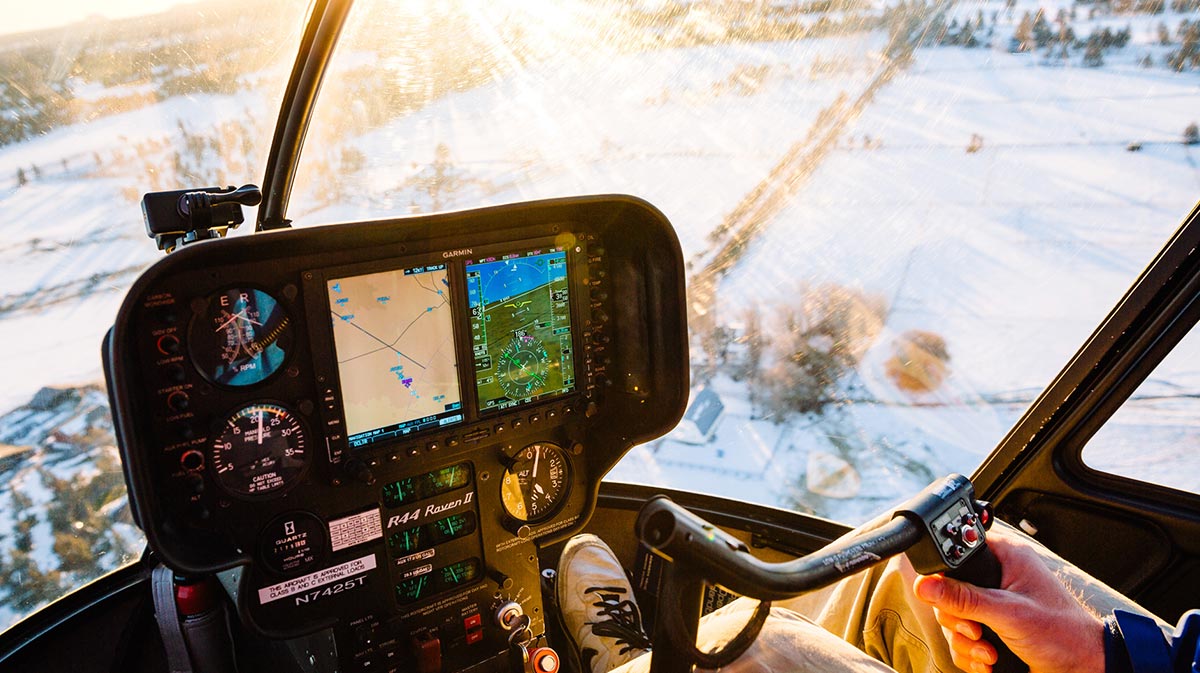Mountain flying is an incredible skill set for any helicopter pilot. Learning how to land on narrow or sloping runways, navigate in dense altitudes, and handle abrupt changes in weather means being equipped for anything the elements present. While other schools offer a mountain flying operations course, Bend has an unforgettable setting. The High Cascades’ craggy peaks and extinct volcanoes offer students the perfect training ground to learn ridges, confined area navigation, and high-altitude landings.
Types of Aircraft We Fly in Our Mountain Flying Operations Course
This course uses the Robinson R22, R44, and Bell 407 helicopters for flight training. Each airframe is equipped for day and night VFR flying. A third-class medical certificate, a commercial pilot’s license, and an endorsement for the R44 are requirements for interested students.
Emergency Landing Procedures in the Mountains
Mountain flying is all about knowing the terrain. Confined area take-offs and landings are essential in mountainous regions, where the natural landscape obstructs or limits the space a pilot has to operate within. And then there’s grappling with power management, engine failures, hydraulics failures, tail rotor failures, and other unforeseen circumstances that may force a landing in a mountainous region. LEFA trains you on how to operate your aircraft safely in each situation.
Cloud Formations, Gap Wind, Lee Waves, and More
Mountain weather gets more than its fair share of airtime in this mountain flying course. There is much to learn about cloud formations, lee waves, and rain shadow, which can affect your flight plans.
Cloud formations provide visual cues about atmospheric conditions and potential hazards, guiding pilots to make informed decisions. Gap winds can also pose challenges with sudden changes in wind speed and direction, challenging even the most seasoned pilots. Also, Lee waves, generated by air flowing over mountainous terrain, can induce turbulent conditions that affect flight stability. Having experience with these meteorological conditions equips helicopter pilots to navigate safely in high-altitude environments.
The Higher the Elevation, the Greater the Challenge
Knowing the environment is crucial in learning to fly in rugged, mountainous terrain. Pilots must be aware of the effects of reduced air density and lower oxygen levels at higher altitudes, which can impact aircraft performance. Handling wind patterns, updrafts, downdrafts, and crossing ridgelines are all essential to learning how to fly in higher elevations.
Teaching Confidence to Pilots, No Matter the Circumstance
Flying with greater confidence is all about preparation and knowledge. After all, what you don’t know, you can’t plan for. That’s why we offer advanced courses like mountain flying for our pilots. This continued education ensures pilots are prepared for every job scenario, especially the unexpected ones. Knowing their aircraft, environment, and themselves gives pilots the mental and tactical preparedness to navigate any mountain setting.
Ready to strap into the cockpit for this course? Reach out to LEFA to take our next course offering.
